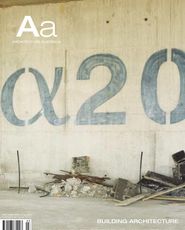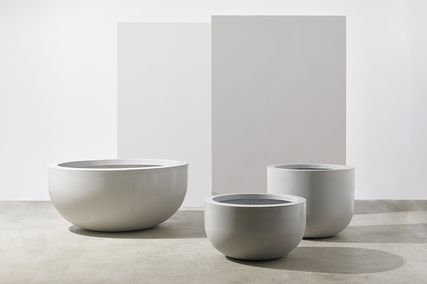DREAM HOME
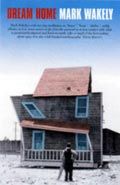
Mark Wakely. Allen & Unwin, 2003. $29.95.
For many architects, the word “home” incites connotations of naff clients going AWOL with dire memorabilia. Indeed, as Christopher Reed and fellow scholars clarify in the 1996 book of essays, Not At Home (Thames & Hudson), the profession’s Modernists generally aim to expunge superfluous evidence of human comforts or sentiments.
Yet despite (or maybe because of) the current dominance of minimalism in interior styling publications, booksellers are purveying quite a few tomes that explain diverse and complex psychologies and philosophies about dwelling at home. Three crucial volumes are Joseph Rykwert’s On Adam’s House in Paradise (MIT Press, 1972, reprint 1993), Clare Cooper Marcus’s House as a Mirror of Self (Conari Press, 1995), and Witold Rybczynski’s Home: A Short History of An Idea (Penguin, 1986).
Now an Australian volume is joining these classics in the Dewey 720 section of the library. Sydney radio producer Mark Wakely has written a remarkably informative and imaginative contribution to this genre of popular metaphysics. As one of the awardwinning minds behind Alan Saunders’ voice on ABC Radio National’s The Comfort Zone, Wakely has spent the last five years wrestling with sophisticated urban development and architectural issues needing simple explanations for Australians pottering about on Saturday mornings. Not surprisingly, home-related topics are frequently discussed on the program.
As well as being a fast and fascinating read, Dream Home is a good advertisement for Wakely’s ability to communicate weighty ideas and information in a breezy and human style. One secret of good communication is personalising the information – and Wakely threads this book with whimsical “recollections” of his life from womb to tomb.
He also introduces readers to interesting home-owners, professional specialists and architects – notably Richard Leplastrier and partner Karen Lambert – and provides intriguing historical anecdotes. Linguistic agility blends those diverse ingredients into a smooth mix.
Dream Home is a lively book – almost certainly too lively for deep-think scholars, especially those already across the topic. But it’s likely to raise most readers’ knowledge about home-making to a higher platform of creative thought. Only one thing bothered me: this book ends too soon.
DAVINA JACKSON
CITY SPACES: ART AND DESIGN
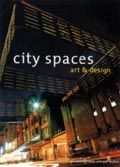
Edited by Elizabeth Mossop and Paul Walton. Craftsman House, 2001. $39.95
This book discusses the role of design and art in city spaces through a collection of general essays and project descriptions.
Reviewing it, I was struck by the relationship between general urban intention and site specificity. The introductory essays articulate the urban paradigms that undoubtedly affect Sydney – cyberspace, events, multiculturalism, and so on – however, few of the essays or art works that follow evoke the sense of Sydney as a dysfunctional, glorious place. Rather, they seem intent on that other peculiarly Sydney obsession: aspiration. Here the Olympics are about developing an indicative newness and remediation and public art seems to be about remembering and restoring an absent indigenous past at the expense of present cultural issues.
Only Rollin Schlicht’s essay captures, for me, the exciting hybridity that characterizes Sydney: the excesses of glitzy commercialism and distorted grids over eroded sandstone; the archaeology of imprecise colonialism. He also notes that “it is difficult to think of a single harmonious juxtaposition between art and architecture [in Sydney]”. This may explain why the rest of the book avoids urban spaces in favour of community art projects in parks. This said, the thorough discussion of Janet Lawrence and Fiona Foley’s Edge of Trees refutes this position (except insofar as its specific virtues has caused a fascination with poles to develop as a line-of-leastresistance approach to art in landscape as designers attempt to make typologies from site specific art responses).
In contrast, Richard Goodwin’s essay, “Exoskeleton”, characterizes scenarios that could be by Italo Calvino about Sydney. Anne Graham’s work emphasizes an ephemeral existence, where to be a Sydneysider is a engage in a certain mode of geographic experience. This gets close to crossing the culture/nature divide, as one must do to engage with Sydney’s particular qualities.
The effect of designers presenting such an overview of art projects in public emphasizes the democratization of taste.
That is, judgement about quality is deferred in favour of general discussions that suggest more quantitative provision – in policy terms.
Yet one must be suspicious about any per square metre provision of public expression and its ability to openly and honestly speak for and to the public. Perhaps this is why Graham and Goodwin see Sydney as being about illicit, interstitial occupation. As the introduction notes, in another particularly Sydney apologia, “the emphasis has been placed on real rather than hypothetical or self-generated works in order to stress their achievability”. “Art and design” may have happened in the public realm, but the question we are left with is, was the work actually any good?
JULIAN RAXWORTHY
DESIGNING AUSTRALIA: READINGS IN THE HISTORY OF DESIGN
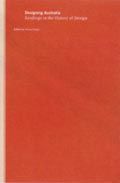
Edited by Michael Bogle. Pluto Press, 2002. $39.95.
This smartly designed book will be welcomed as one of the few contributions to the history of design in this country. Michael Bogle has collected a broad range of essays and excerpts beginning with an 1827 description of manufacture in New South Wales and ending with Lucien Henry’s “Australian Decorative Arts: an Essay” of 1888. In between are 36 essays organized by theme: The History of Design, Design Education, Interior Design, Industrial Design, Textiles and Costume, Graphic Arts, Furniture Design, Architecture and Early Modernism, Case Studies, and Identity. Mostly short, the essays range from period pieces to recent history writing, from the dry to the witty, and from overviews to precise accounts. Together they result in an engaging volume which gives a strong sense of Australia’s rich and diverse design history and culture.
I do, however, have some minor quibbles, all of which relate to the ease with which a reader might actually engage with the book.
There are no illustrations. This is undoubtedly for reasons of economy, but our appreciation and understanding would be enriched by access to relevant images. The dates of texts are buried at the back of each piece and square brackets abound, indicating minor editorial changes. This mars readability even as it aids sense. All of which makes the book harder to navigate, but these concerns are of little consequence compared to the richness offered by these diverse glimpses of Australian design.
JUSTINE CLARK
MANNING CLARK HOUSE: REFLECTIONS

Trevor Creighton, Peter Freeman and Rosyln Russell. Manning Clark House, 2002. $20.
This slim volume provides a personal, affectionate account of the house designed by Robin Boyd for Manning and Dymphna Clark in 1953. The first essay, by historian Roslyn Russell, takes the form of a walkthrough, providing glimpses of life in the house through anecdote. This draws, in part, on Russell’s intimate experience of the house as the Clarks’ research assistant. The house is depicted through photographs by Trevor Creighton and sketches by Peter Freeman and these also convey a sense of the house as a place in which lives were conducted.
Freeman’s essay from “an architect’s view” then gives a short description of the houses as a “precise yet modest architectural achievement”. Published by the trust which now administers the house, the booklet will work well as a touchstone for visitors who are interested in the Clarks, the house and the architecture.
JUSTINE CLARK

